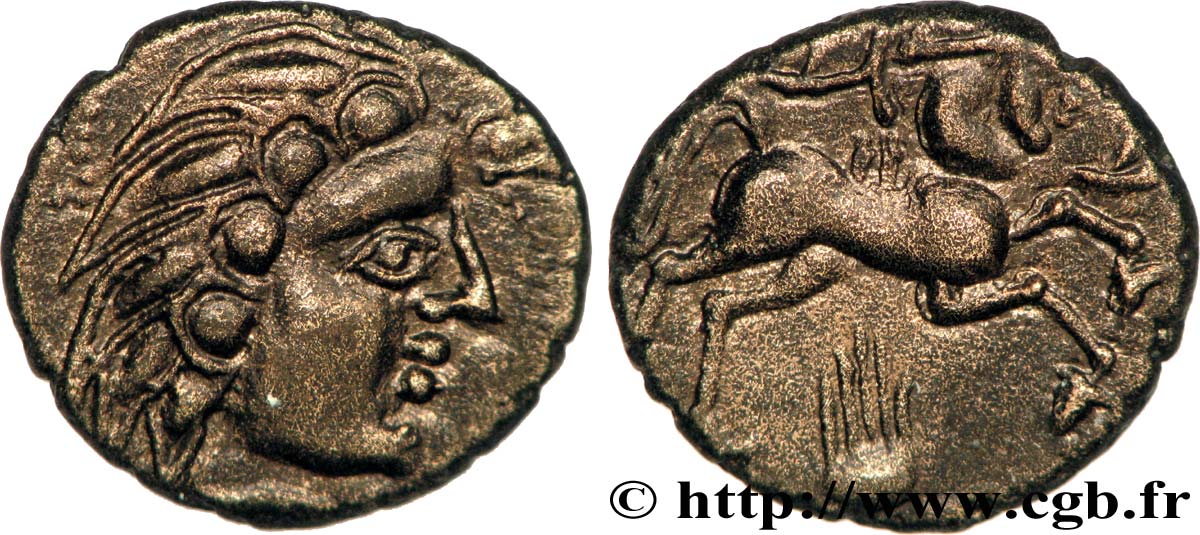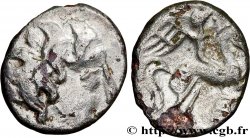bga_270814 - PICTONES (Area of Poitiers) Statère d’électrum à la main, classe A VII
Not available.
Item sold on our e-shop (2012)
Price : 900.00 €
Item sold on our e-shop (2012)
Price : 900.00 €
Type : Statère d’électrum à la main, classe A VII
Date: Ier siècle avant J.-C.
Mint name / Town : Poitiers (86)
Metal : electrum
Diameter : 18 mm
Orientation dies : 12 h.
Weight : 6,02 g.
Rarity : R2
Coments on the condition:
Monnaie sur un flan un peu court et ovale, avec un avers complet et de frappe très vigoureuse, mais un revers décentré sur la partie supérieure. Alliage cuivreux, sombre et brillant, mais comme poreux
Catalogue references :
Obverse
Obverse legend : ANÉPIGRAPHE.
Obverse description : Tête (d’Ogmius) à droite, la chevelure en grosses mèches, d’où partent des cordons perlés.
Reverse
Reverse legend : ANÉPIGRAPHE.
Reverse description : Aurige tenant une couronne dirigeant à droite un cheval androcéphale ; dessous, une main.
Commentary
Ce statère est d’un style bien particulier, surtout au niveau de la tête. le métal est lui aussi atypique par rapport à tous les autres statères pictons que nous avons eu. Le style correspondrait au n° 15 pl. XVIII et aux n° 1-5 pl. XIX de l’ouvrage “L’or gaulois”. Ces monnaies correspondraient aux derniers exemplaires de la série A.
Pour la classe A var. VII à laquelle appartient notre monnaies, les auteurs ont recensé douze exemplaires pour un poids situé entre 5,25 et 6,05 grammes.
Pour la classe A var. VII à laquelle appartient notre monnaies, les auteurs ont recensé douze exemplaires pour un poids situé entre 5,25 et 6,05 grammes.








 Report a mistake
Report a mistake Print the page
Print the page Share my selection
Share my selection Ask a question
Ask a question Consign / sell
Consign / sell
 Full data
Full data









